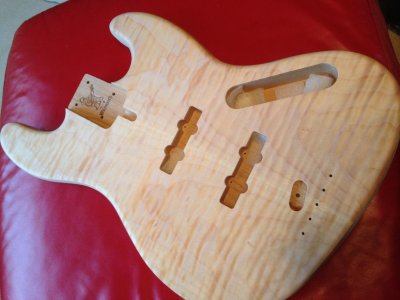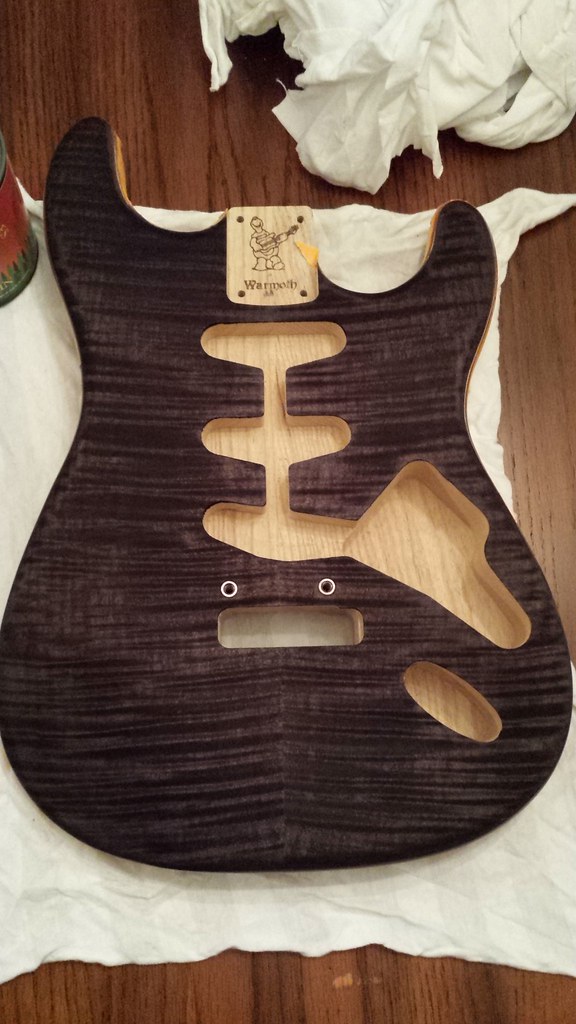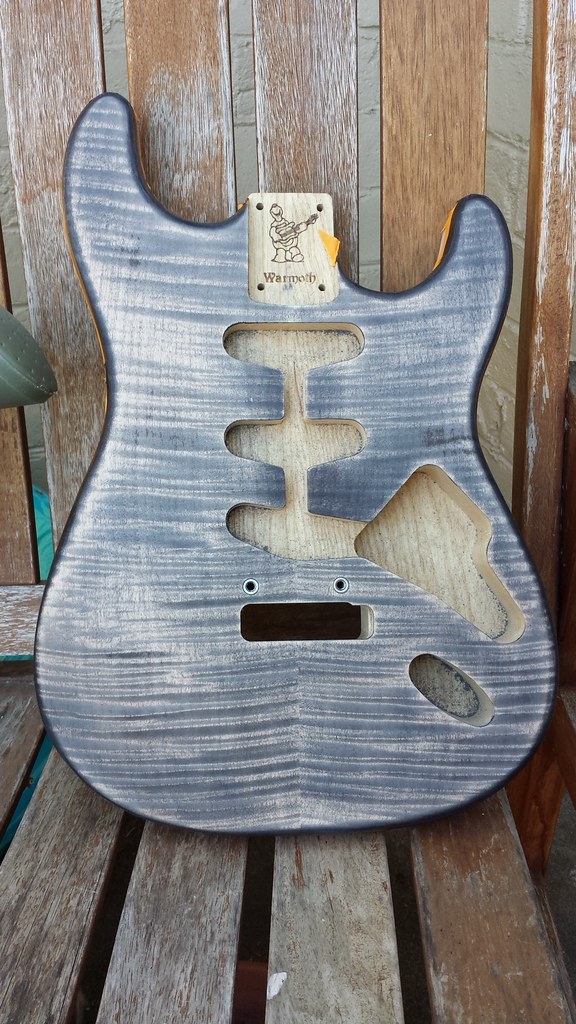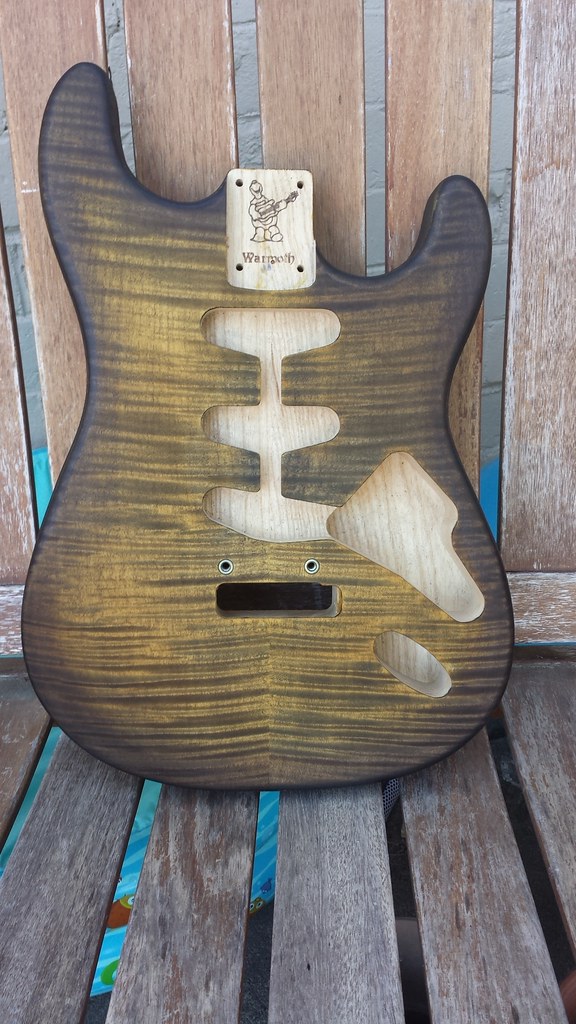What doesn't work is using either a water-based finish right on top of water-based dyes, or an oil-based finish right on top of oil-based dyes. In those cases, the finish is going to be trying to pull the dyes up out of the wood and into the finish*. So, using water-based dye, then Tru-oil on top of that works fine. That particular process is also relatively stink-free, you can do it in your (air-conditioned, NOT-so-humid) kitchen as long as you have some closet or something where you can hang the body for a month to let the last coat of Tru-oil cure completely. For some reason, Tru-Oil doesn't advertise that part too clearly? :dontknow:
I've done several guitars with water-based dye, then a sealer coat of wax-free shellac - Zinnser Sealcoat is the stuff -
https://www.google.com/#fp=633e4ade33ba97d5&psj=1&q=zinsser+sealcoat
- and then water-based poly on top of that, The shellac keeps the poly and the dyes from makin' whoopie with each other.
The one big selling point of the oil-based dyes, MEK-based in particular, is that they can get the absolute most-intense colors on there - Paul Reed Smith & them sort use the MEK stuff. MEK is some kind of awful death-dealing synthetic doomsday goop, if you flush a drip down your toilet your whole town gets brain cancer the next day - so of course if works great! :icon_thumright: Actually I think the big worry there is if you're using a compressed-air gun, you HAVE to use a real respirator mask and you'd be foolish not to wear rubber gloves.
Having said all this, I have seen people here get amazingly deep finishes with water-based dye, get absolute glass-smooth finishes with Tru-Oil (and a LOT of elbow grease); there are even people who, as a matter of course, do this (*) as a matter of course - water-based poly over water-based dyes - but, they've done a hundred of them, they know exactly how the specific chemicals and brands they use will interact, they. like, measure stuff and take notes and other dreary worky-sounding behaviors. :tard:
I am not a big "finish guy", primarily because I don't have room to spread stuff out that doesn't need to be put back ("What do you mean YOUR Tupperware, honey? I though it was OUR Tupperware"...) It wouldn't hurt to hit the library and see what they have on wood finishing, and if you just root through the "finishing" threads here, there's at least one of everything, and if you see something plausible you can PM the guy who did it - just tell 'em how cool they are, they'll spill the beans for sure.
Oh - yes, people have done bursts with regular hand-rubbed dyes; no, I've never done it. I am sure you'd want separate pads for the amber, red, and brown dyes, and a few others for the blending. The hardest part about that would be knowing when to STOP.
"It's done! It's done!"
"A little bit more, just a little bit..."
"It's done! It's done!"
"A little bit more, just a little bit..."
"It's done! It's done!"
"A little bit more, just a little bit..."
Etc. Fortunately, if you HAVE to bail, common household bleach will bust you back to clean wood instantly. And then, you have to get the bleach off.... :sad1:








